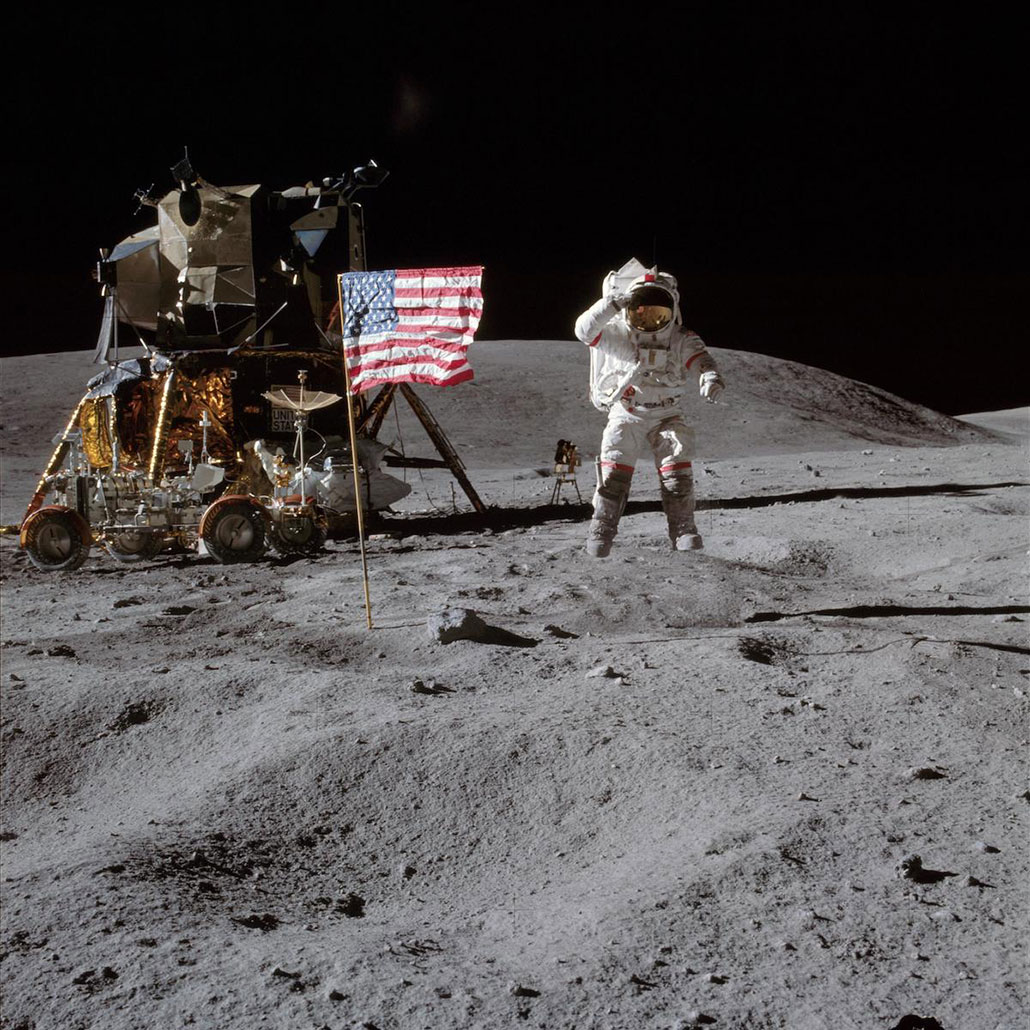Explainer: How do mass and weight differ?
The two are related, but definitely not the same

All of the metal weights shown here are made from the same material. But gravity is pulling the right side of this balance scale farther down than the left side. This shows that the total mass of the metal weights on the right side is greater.
xefstock/E+/Getty Images Plus; adapted by L. Steenblik Hwang
By Trisha Muro
In everyday life, we often use the words “mass” and “weight” as if they’re the same. But in science, it’s important to be precise. Mass and weight are both measurements that describe heaviness, but they actually mean very different things. Let’s be specific!
Mass is a measurement of the amount of matter in some object. It depends only on what type of atoms the object is made of, and how many atoms there are. Mass is traditionally measured in kilograms (kg). A pineapple or a wooden baseball bat each have a mass of about 1 kilogram.
If you were to measure out 1 kilogram of steel and 1 kilogram of feathers, they would each have the same mass. But their volumes would differ. You’d need a far bigger volume of feathers because most of the elements they’re made from are lighter than those in steel. It takes more of those atoms to build up the same mass — which takes up more space.

Educators and Parents, Sign Up for The Cheat Sheet
Weekly updates to help you use Science News Explores in the learning environment
Thank you for signing up!
There was a problem signing you up.
People in the United States rarely describe objects using kilograms in daily life. Scientists and doctors use this term because it is the standard unit of mass in the metric system. (A standard unit is a definition that all scientists agree on.)
You can change an object’s mass by removing some of its parts. When you take books out of your backpack at the end of a school day, you’ve decreased the backpack’s mass. Mass can also change by adding more matter. When a child grows, their body is building longer bones and bigger organs. The child’s mass will increase because they are transforming food energy into matter for their body.
It’s important to know that mass doesn’t change by varying its shape, location or size. Your body’s mass is the same when you’re curled up on the sofa or when you stretch as high as you can. And it’s the same when you’re at home or at the beach or at school! But your mass is a little bit more after you’ve eaten breakfast, compared with when you first wake up in the morning. Mass is a fundamental measurement of how much matter an object contains.

Weight is a measurement of the gravitational force on an object. It not only depends on the object’s mass, but also on its location. Therefore, weight is actually a measure of force. In the United States, most people measure weight in pounds.
Let’s say that your body has a mass of 40 kilograms. Your mass is 40 kilograms on Earth, on the moon, on Jupiter — and even floating inside the International Space Station. Your mass is 40 kilograms no matter where you are. But your weight differs from place to place because of differences in how hard gravity at each site pulls on you. On Earth’s surface, 1 kilogram of mass is equivalent to 2.2 pounds of weight. So your 40-kilogram mass on Earth would weigh 40 x 2.2 — or 88 pounds.
Language can get tricky here. Scientifically, you shouldn’t say, “My doctor measured my weight as 40 kilograms,” because weight isn’t the same as mass. It would be similarly incorrect to say, “My doctor measured my mass as 88 pounds.” However, since we all experience the same strength of Earth’s gravity on our mass, in casual language we often use mass and weight interchangeably. In much the same way, most people feel comfortable describing mass in pounds and weight in kilograms.
To avoid this confusion, scientists use a standard unit for force. It’s called the newton (in honor of Isaac Newton). On Earth, 100 newtons of weight (a force) is equal to about 22 pounds. This is a measure of how hard Earth’s gravity pulls on a mass of about 10 kilograms.
Mass and weight are proportional

As the mass of something rises or falls, its weight will change in the same way. And if the gravitational force on something rises or falls, its weight will also. In short, the mass of something rarely changes, but there are multiple ways its weight can change.
The gravity you’d feel on the surface of a planet depends on its density. We say that Earth has the gravitational force of one “G.” The moon is much smaller and less dense than Earth. Its gravity is one-sixth G. Although Jupiter is much, much bigger than Earth, it’s not very dense. So Jupiter’s gravity is 2.5 G.
If your mass is 40 kilograms on Earth, your 88-pound weight would drop to 15 pounds on the moon. On Jupiter, you’d weigh 220 pounds. On the International Space Station, floating in orbit, your weight would be zero. But your mass would stay the same — 40 kg — in all of these places. For that reason, mass is a fundamental property of matter and weight is not.
Rocket launches offer an interesting example of how mass and weight relate. At launch, the rocket is full of fuel, so its mass is greatest. At Earth’s surface, it also feels the maximum pull of gravity. So its weight is heaviest. A few minutes after launch, the rocket has burned through a huge portion of its fuel. This means it has lost mass as that fuel has been transformed into energy. In addition, the rocket is farther from Earth’s surface. Gravity therefore pulls on it with even less force. Both the rocket’s mass and its weight have dropped. The rocket’s engines can now push the rocket even faster than they could at launch. (Next time you watch a rocket launch, notice how huge those launch engines are!)







